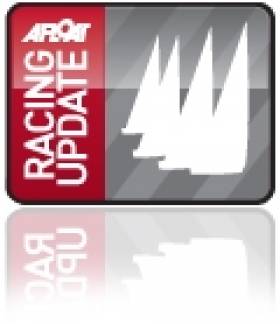Displaying items by tag: Moth Worlds
The 2020 International Moth World Championships scheduled for The UK's Weymouth and Portland National Sailing Academy has been cancelled due to COVID-19.
The Organising Committee felt that the chances of being able to hold a Worlds event in September with all countries being able to participate were 'slim at best' due to the pandemic.
Leading Irish Moth sailor David Kenefick, one of a number of Irish foiling sailors who was expected to compete off the Dorset coast, has said that it was the right thing to do in the circumstances. However, the Royal Cork ace has also given a thumbs up on social media to the organisers decision to go ahead with a UK Nationals instead on the same dates, 1-11 September.
The recast event comes with an open invitation to sailors from any nation to come and race if they can make it to the UK.
Annalise Murphy Finishes Second Lady At Moth Worlds
#MothWorlds15 – Kiwi sailing sensation Peter Burling dominated the 2015 Moth Worlds in Sorrento, Australia last Friday but two Irish sailors featured in the top class field too. The National YC's Annalise Murphy finished in 56th place and Howth's Alistair Kissane finished in 58th place from 158 entries
In the very heavy winds of the last race Olympic Radial champ Annalise scored 30th, putting her second lady overall. She told Afloat.ie:
'My gantry exploded when I was in eighth coming down the last downwind to the finish. Managed to grab my rudder before it sank. I'm ok, just annoyed, it would have been an epic way to finish! I am seriously battered though!
Emirates Team New Zealand sailor Peter Burling won the following his domination of the event with 9 race wins in the 14 race series. "There are some great guys in this record fleet, I am absolutely stoked to win," said World 49er Champion Burling who will have little time to celebrate and is then heading to the ISAF Sailing World Cup in Miami, then it's back to America's Cup duties.
The Irish results were made all the more significant taking account of the quality of entries at the event in Sorrento Sailing Couta Boat Club – including five members of the Americas Cup winning Oracle USA team, sailors from the Artemis and Emirates teams, world champions and Olympic gold medalists including Tom Slingsby who sailed with John Bertrand to win the Etchells Worlds in Howth in 2010.
Kissane managed a very steady set of results including 26th and 20th place in the final two races. According to the Howth Yacht Club website, Kissane spent six hours repairing his Moth before the final day – a product of racing these foiling boats in the high wind and sea conditions that were prevalent in the latter part of the championships.
Moth Class 'Makes Me Love Sailing So Much' Says Annalise Murphy
#AnnaliseMurphy - She may have made her name as a Laser Radial sailor, coming so close to an Olympic medal in the class at London 2012, but it's the new moth class that makes Annalise Murphy love sailing today.
Murphy shares her passion for the foil with Yachts and Yachting on the second day of the Moth Worlds in Australia, where she joins fellow Rio 2016 contender Ryan Seaton and Howth Yacht Club's Alistair Kissane in the Irish contingent.
And she describes the event as a "lifetime opportunity", saying that "it's so much fun to be able to go and race against all the legends of the sailing world... being able to race against guys who are Olympic medallists and America's Cup guys, I might never get to do that again."
But having sailed moths for just over a year, it's still an adjustment switching from the more easily handled Laser to the fast, twitchy foil - especially since she's using the same rig as the boys.
Yachts and Yachting has more on the story HERE.































































